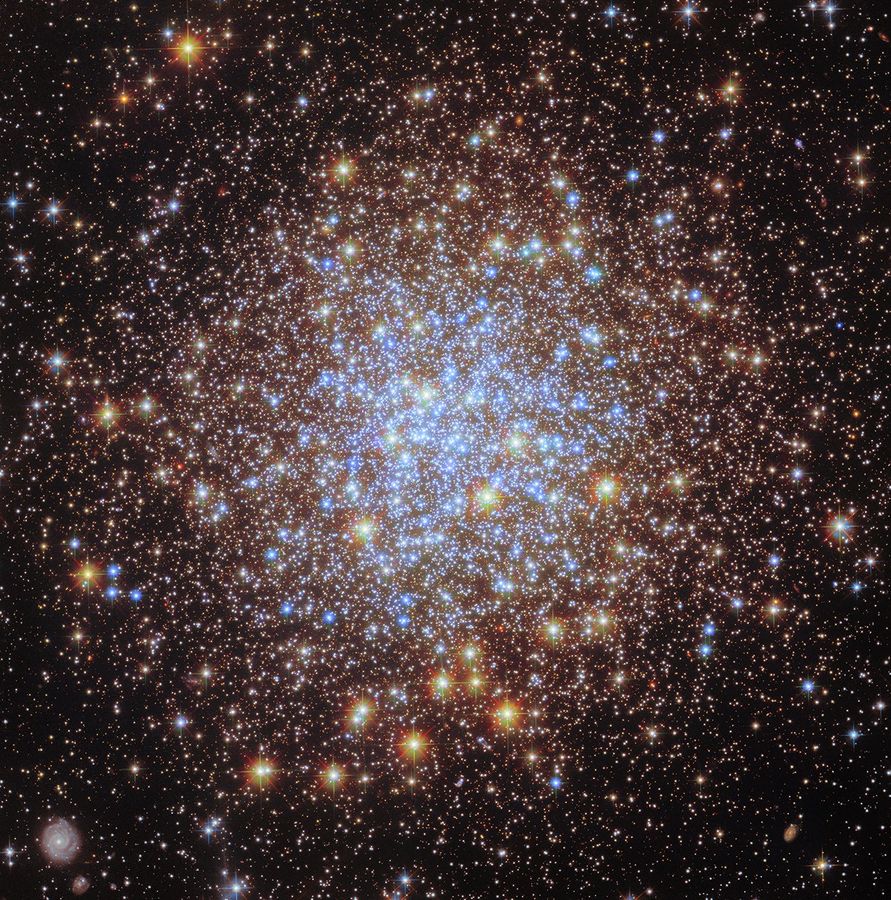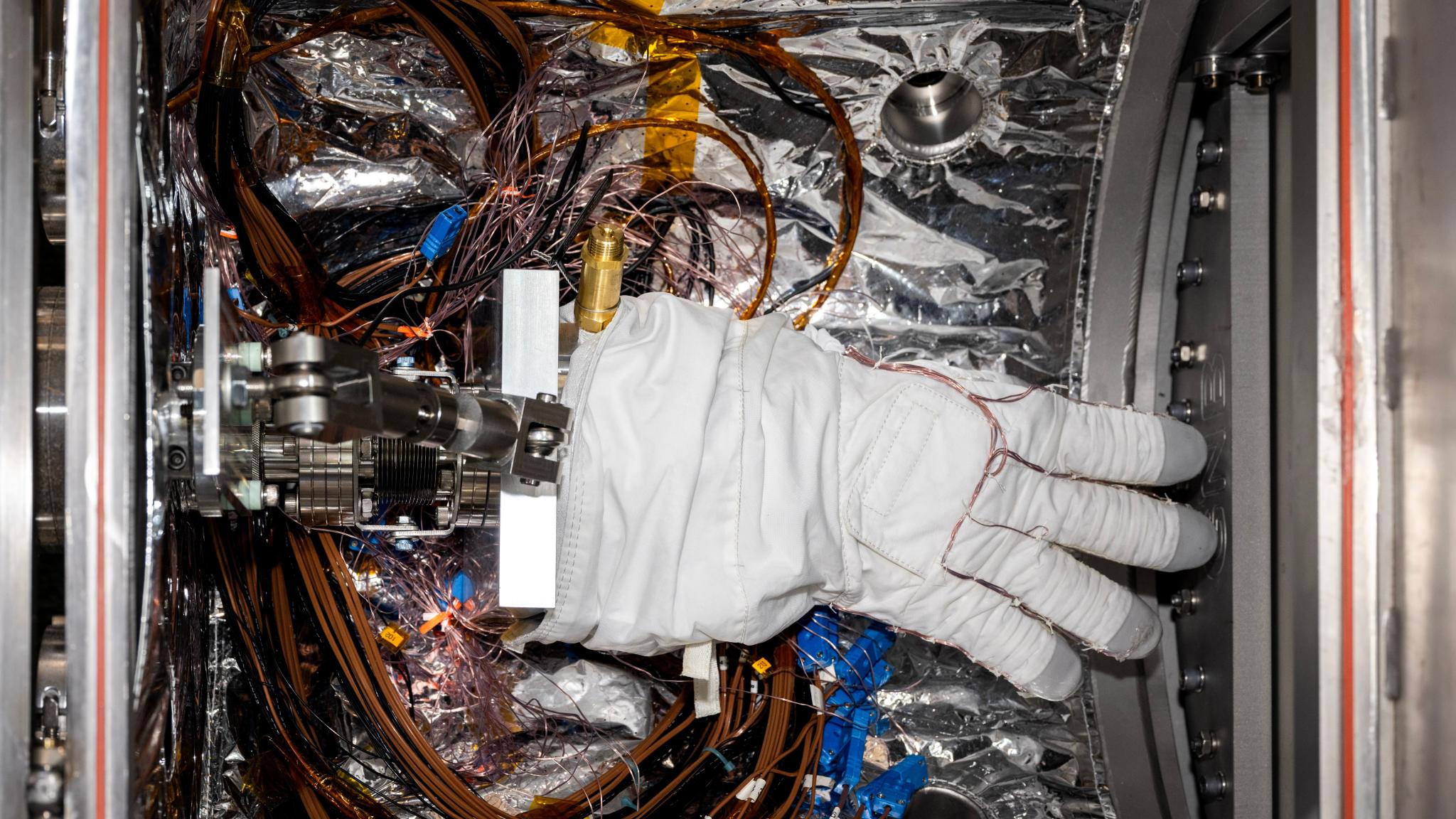Hubble Visits Glittering Cluster, Capturing Its Ultraviolet Light
As part of ESA/Hubble’s 35th anniversary celebrations, the European Space Agency (ESA) shared new images that revisited stunning, previously released Hubble targets with the addition of the latest Hubble data and new processing techniques.
ESA/Hubble released new images of NGC 346, the Sombrero Galaxy, and the Eagle Nebula earlier in the month. Now they are revisiting the star cluster Messier 72 (M72).
M72 is a collection of stars, formally known as a globular cluster, located in the constellation Aquarius roughly 50,000 light-years from Earth. The intense gravitational attraction between the closely packed stars gives globular clusters their regular, spherical shape. There are roughly 150 known globular clusters associated with the Milky Way galaxy.
The striking variety in the color of the stars in this image of M72, particularly compared to the original image, results from the addition of ultraviolet observations to the previous visible-light data. The colors indicate groups of different types of stars. Here, blue stars are those that were originally more massive and have reached hotter temperatures after burning through much of their hydrogen fuel; the bright red objects are lower-mass stars that have become red giants. Studying these different groups help astronomers understand how globular clusters, and the galaxies they were born in, initially formed.
Pierre Méchain, a French astronomer and colleague of Charles Messier, discovered M72 in 1780. It was the first of five star clusters that Méchain would discover while assisting Messier. They recorded the cluster as the 72nd entry in Messier’s famous collection of astronomical objects. It is also one of the most remote clusters in the catalog.



